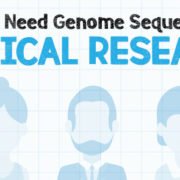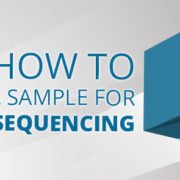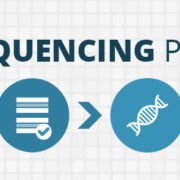5 Common Myths of Genome Sequencing
Having many customers in various fields, we hear a lot of interesting myths that are persistent across each of them. Some come from misguidance of other companies in the sales process, other myths are rooted in legacy in which the landscape has changed dramatically since then. We’ve collected a few of those myths and have compiled the top five that we hear. Let’s debunk them!
1. You need to do whole genome sequencing to get valuable insights
Myth. This is one that we hear quite frequently from the healthcare, insurance, and forensics verticals. The reality is that whole genome sequencing is incredibly valuable for certain types of research, but often times is excessive. When doing research on a particular disease or trying to understand the patient outcome from a prescribed drug, performing a whole genome sequence will produce more noise data rather than signal. Instead, Targeted Sequencing provides a more specific and comprehensive approach that produces much less excessive data. Additionally, Targeted Sequencing is much cheaper to produce as you’re limiting the amount of genes the panel needs to run through as well as reduces the data being produced for storage.
Many of our oncological focused customers have switched over to Targeted Sequencing to be more specific when looking at different types of cancers. After they’ve scoped in on certain genes they believe to be biomarkers, they then look at expanding out genes they sequence. At the end of the day, it’s about taking a more iterative approach to ensure that your research is going in the right direction, rather than look at the entire picture immediately and get lost in the noise.
2. Genome data requires massive storage needs
Myth. While genome sequencing can absolutely produce a torrent of data, the scale of the data can be reduced significantly if proper planning is done up front. For example, like in myth 1, if the researcher does targeted sequencing as opposed to whole genome sequencing, the amount of data produced can be anywhere from 5-10x less. This translates into much cheaper storage costs. This is one of the many reasons why we offer free consultation to our customers, which helps them scope their projects better, translating directly into cost savings.
Apart from better scoping, data can be stored in more productive ways. Often times, researchers will want to look at the data, compare it against other data sets, then not look at it for years. We’ve termed this as “hot” and “cold” storage. Hot storage is where users can actively compare large data sets, filter data, generate reports, and much more. Cold storage is for long term, archival storage where the data is treated more as a “system of record” for auditing purposes. Hot storage is more costly for performance reasons but boasts more features when diving into the data. Cold storage provides much cheaper pricing however limits the amount of data retrieval possible. We’ve created a platform that allows for both, providing users with flexible pricing that scales up or down based on their data needs while never breaking the bank.
3. Genome sequencing is very expensive
Myth. In fact, genome sequencing has gone down significantly in the general market. We’ve even been able to get it down up to 5x cheaper per sample than the current average market price by offering a subscription service. Historically, sequencing was very expensive but with modern technology (next generation sequencing), the throughput and scale at which we can sequence makes the price per sample much more cost-effective.
This also ties back into myth 1 which is really around scoping what you, as a researcher, are trying to accomplish. For example, if you do need whole genome sequencing for bacteria, then you’re looking at approximately $500-$1,000 per run depending on the volume (10-20 samples). Conversely, if you’re doing Targeted Sequencing, the cost may be much cheaper depending on the panel.
4. You have to be a certified geneticist to get value
Myth. While it doesn’t hurt to have a deep background in genetics, it simply isn’t true that you need to know genetics inside out to get value. This is where bioinformatics steps into practice.
When a sample is sequenced, the data produced from the sequencer comes out as very unstructured data. Typically, it is run through an alignment program that structures the data against a reference genome. Once structure, a user can run many bioinformatics pipelines to glean various insights around their sequencing run. For example, a user could look at protein-to-protein interactions, an interactome analysis, or even a comparative analysis against past samples.
What isn’t a myth is that the software for bioinformatics is complicated. The software is usually quite legacy and requires some massaging, as well as the datasets produced from the sequencers require translating. We know that it can be challenging to researchers, which is why we offer in-house bioinformatics services to help user gain these valuable insights.
5. Genome sequencing by itself can provide value
Myth (sort of). Our answer to this is “yes and no”. Genome sequencing can be a very valuable tool when used properly. The key here is that sequencing isn’t something you just perform and then magically get insights out of. The data is messy, which requires bioinformatics to clean it up and additional pipelines to generate insights. Additionally, viewing genetic data in a silo can sometimes lead down rabbit holes that don’t hold benefits at the end of them. It is best practice and often crucial that the genetic data be used as supplementary evidence within research rather than a sole leader of the research.









Leave a Reply
Want to join the discussion?Feel free to contribute!